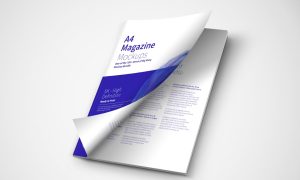Microstructure and wear properties of AISI M2 tool steel
on RF plasma nitriding at different N2–H2 gas compositions
میکروساختار و خواص سایشی فولاد ابزار AISI M2
نیتروژن دهی پلاسمایی RF شده در ترکیب های مختلف از گازهای N2–H2
ABSTRACT
Wear behavior of quenched-tempered AISI M2 tool steel samples has been studied after plasma nitriding at different N2–H2 plasma gas flows containing 25, 50 and 75 sccm N2. Plasma nitriding was performed at 450 °C for 8 h under floating potential using a plasma reactor equipped with a radio frequency power generator. Microstructure, phase composition, nitrided layer thickness, hardness and surface roughness of the samples were studied using optical microscopy, X-ray diffraction, microhardness and surface profilometry measurements. Dry sliding wear resistance of samples was determined by performing ball-on-disc wear testes. The results revealed formation of mainly a diffusion zone at the 25 sccm N2–75 sccm H2 gas flow and mono-phase ε-Fe2–3N compound layer at higher N2 concentrations. Plasma nitriding increases near surface hardness up to 50% (about 1600HV0.025) irrespective of the N2:H2 ratio, where nitrided layer depth and surface roughness increase with increasing the N2 flow rate in the plasma gas. Depending on the nitrogen content, sliding wear resistance may be improved between 20 and 90% with respect to the un-nitrided substrate. Among the nitrided samples the maximum and minimum wear resistance was obtained at plasma gases containing higher and lower H2 fractions, respectively. Decreasing wear resistance with increasing N2 flow rate in the plasma gas attributed to formation of the hard and brittle compound (white) layer on the sample surface and development of residual stress profiles.
![]() جهت دانلود رایگان نسخه لاتین این مقاله اینجا کلیک کنید .
جهت دانلود رایگان نسخه لاتین این مقاله اینجا کلیک کنید .

چکیده
رفتار سایشی نمونه های فولاد ابزار AISI M2 کوئنچ تمپر شده پس از نیتروژن دهی پلاسمایی در جریان¬های متفاوت گاز پلاسمای N2–H2 شامل 25، 50 و 75 sccm N2 مورد مطالعه قرار گرفته است. نیتروژن دهی پلاسمایی در °C 450 برای 8 ساعت تحت پتانسیل متغیر با استفاده از یک راکتور پلاسمای مجهز به یک ژنراتور با توان رادیو فرکانس صورت گرفت. میکرو ساختار، ترکیب فاز، ضخامت لایه نیتریدی، سختی وزبری سطح نمونه¬ها با استفاده از میکروسکوپ نوری، تفرق اشعه ایکس، میکرو سختی و اندازه گیری پروفیلومتری سطح مطالعه شد. مقاومت به سایش لغزش خشک نمونه ها توسط آزمون های گلوله روی دیسک بررسی شد. نتایج نشان دهنده ی تشکیل عمده ی یک ناحیه نفودی در جریان گاز 25 sccm N2 – 75 sccm H2 و لایه ترکیبی تک فاز ε-Fe2–3N در غلظت های بیشتر N2 بود. نیتروژن دهی پلاسمایی سختی سطح را تا حدود 50% (حدود 1600 HV0.025) صرف نظر از نسبت N2:H2 افزایش می دهد، در حالیکه عمق لایه نیتریدی و زبری سطح با افزایش نرخ جریان گاز N2 در گاز پلاسما، افزایش می یابند. بسته به میزان نیتروژن، مقاومت سایش لغزشی می تواند با توجه به زیرلایه ی نیتریده نشده، از 20 تا 90 درصد بهبود یابد. در بین نمونه های نیتریده شده بیشترین و کمترین مقاومت به سایش به ترتیب در گازهای پلاسمایی شامل بیشترین و کمترین درصد H2 حاصل شد. کاهش مقاومت به سایش با افزایش نرخ جریان N2 در گاز پلاسما به دلیل تشکیل لایه ترکیبی سخت و شکننده (سفید) روی سطح نمونه ها و ایجاد پروفایل های تنش باقی مانده بود.
![]() جهت دانلود ترجمه تخصصی و فارسی این مقاله می توانید وجه آنرا پرداخت نموده و بلافاصله دریافت نمایید.
جهت دانلود ترجمه تخصصی و فارسی این مقاله می توانید وجه آنرا پرداخت نموده و بلافاصله دریافت نمایید.






نقد و بررسیها
هنوز بررسیای ثبت نشده است.